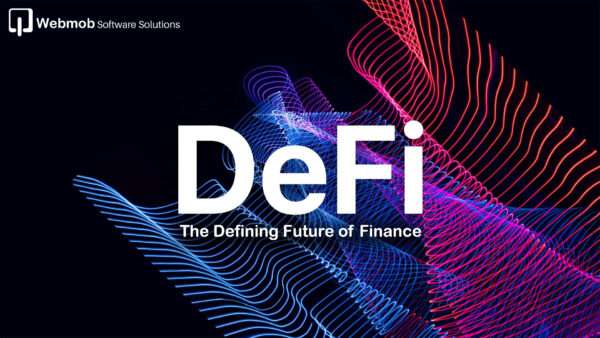DeFi is a brand-new vision that is making waves in the financial sector, where you can perform peer-to-peer transactions without the use of a middleman, such as banks and brokers. You can use DeFi technologies to perform everyday financial tasks such as borrowing, lending, buying, and trading, just like any other financial institution but much faster and more secure. There are already some of the best DeFi projects deployed which are doing just fine in the blockchain world. In this blog, let’s take a look at DeFi, where it came from, how it works, and why it’s been termed as the “The Future of Finance”.
DeFi’s Emergence:
The traditional financial markets began to show signs of an impending collapse in 2008, affecting all of the world’s major economies. At that time, some enthusiastic people began to consider a financial system free of such traditional concerns.
Following the creation of Bitcoin and, later, Ethereum, the concept of DeFi emerged, and now it is used in a variety of incredible and exciting ways, so let’s delve deeper into DeFi solutions and learn more about it.
DeFi: What is it?
To understand decentralized finance or DeFi technologies, you must first understand traditional finance and how it differentiates from DeFi.
Traditional Finance: For many years, we have relied on a traditional finance system to get financial services. The power to control and regulate the demand and supply of currencies, stocks, bonds, debt, and interest is in the control of a few institutions. Banks and financial institutions control money and determine who has and does not have access to basic financial services. To conduct any transactions or trades, borrowing, or lending, we are solely dependent on the centralized banking system.
The entire point of decentralized finance is to eliminate this centralized system from finance.
Decentralized Finance: Decentralized finance, or DeFi, means financial applications built on the blockchain using smart contracts that allow you to transfer funds and buy things without the use of a middleman, such as a bank.
You can conduct transactions with anyone without completing KYC, filling out lengthy forms, providing all of your personal information to banks, or waiting in line to deposit your funds.
DeFi technologies will not only allow you to start trading, withdrawing, and getting loans, but you can also do a background check and verify your financial transactions in its distribution system. You only need a smart device with internet access.
And some of the best DeFi projects are being developed these days which are allowing people to use financial services regardless of who they are or where they are.
How does DeFi work?
It mainly has three components: blockchain, cryptocurrency, and DApplications.
1. Blockchain
DeFi Technologies uses a decentralized ledger system called the blockchain. Blockchain is principally a software protocol that enables parties to function under shared beliefs and information without having to trust one another. This data can be anything, such as location, personal information, or account or wallet information. All of this data is filled into a block and chained together to allow for a review of the previous history, known as a blockchain.
2. Cryptocurrency: A form of alternative currency
Another is cryptocurrency. This is one of the most significant uses of blockchain technology. Cryptocurrency is essentially a token that is used to conduct transactions on the blockchain. The first cryptocurrency was Bitcoin, which functions similarly to a payment network in that it can be stored and transacted in the real world without the use of an intermediary.
3. DApps (decentralized applications)
The third is DApps, or decentralized apps. These are similar to traditional applications but are hosted on decentralized smart contract-enabled blockchains, such as Ethereum.
The fundamental idea behind DApps is to conduct peer-to-peer (P2P) financial transactions using cryptocurrencies and tokens. Peer-to-peer (P2P) transactions are made from one person to another directly without the use of an intermediary.
These DApps are permissionless and censorship-resistant. They can be used by anyone and are not controlled by any single entity.
The future of DeFi:
Indeed, DeFi solutions are in the early stages, and there are a few challenges that DeFi technologies are currently facing. The first is asset over-collateralization. The second is the irreversible feature of blockchain, which can allow hackers to exploit bugs. and, the third in particular is the gas fees for major blockchains such as Ethereum.
Still, the true potential of DeFi is revolutionary. The rise of DeFi solutions has demonstrated that it offers convincing benefits over traditional finance, as well as many qualities such as access, efficiency, interoperability, and transparency.
This new wave of DeFi is being led by Webmob software solutions and, over the years, it has emerged as a service delivery pioneer in this dynamic Fintech industry. Once the challenges of user engagement and people’s trust are removed by decentralized finance, we will see it as an essential part of our lives in the future.
There will be a lot of work ahead, but one thing is certain: any company that adopts technology while adhering to regulations will emerge as the champion, while the rest will fade into oblivion.
Nitin Gupta, the CEO of WebMob Software Solutions, is a visionary leader renowned for his innovative approaches to leveraging emerging technologies to transform businesses globally. Under Nitin's guidance, WebMob has evolved into a pioneer in fintech, catering to esteemed clients across Europe, APAC, and the Middle East. As a thought leader, he continues to drive WebMob towards new heights of success, cementing its reputation as an industry leader in the IT sector.

